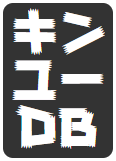Example¶
Connecting¶
Connect to KYDB with AWS S3 as the implementation.
Note there are other implementations. See DB Implementations
import kydb
db = kydb.connect('s3://my-kydb-bucket')
Literals as Data¶
Writing to DB:
key = '/mytest/foo'
db[key] = 123
Reading from DB:
db[key] # returns 123
Deleting:
db.delete[key]
The above actually performed no read from the S3 bucket because of the cache. Let’s force reload when we read:
db.read(key, reload=True) # returns 123
Vanilla Python Objects¶
Any pickleable object can be stored in the KYDB:
key = '/mytest/bar'
val = {
'my_int': 123,
'my_float': 123.456,
'my_str': 'hello',
'my_list': [1, 2, 3],
'my_datetime': datetime.now()
}
db[key] = val
assert db.read(key, reload=True) == val
Object Hierarchy¶
Document-oriented databases typically does not have a concept of filesystem-like hierarchy. Depending on the implementation there are ways to emulate the behavior. There may even be needs for some meta data objects to support the idea of an empty folder. We will not go into these implementation details here. However the below demonstrates the API.
An empty folder can be created using mkdir:
db.mkdir('/empty-folder')
db.ls('/') # returns ['empty-folder/']
If an object is inserted inside some folder hierarchy, the folders would be created:
db['/foo/bar/baz'] = 123
db.ls('/') # returns ['empty-folder/', 'foo/']
db.ls('/foo') # returns ['bar/']
rmdir can be used to remove an empty folder:
db.rmdir('/empty-folder')
db.ls('/') # returns ['foo/']
To recursively remove all contents of a folder similar to the UNIX command rm -rf use rm_tree:
db.rm_tree('/foo')
db.ls('/') # []
Python Object DB¶
This requires a config file in the database to map class name to fully qualified path.
The advantage of this is:
- When classes are refactored to a different folder, deserialising from DB still works.
- Clean API to define what attribute should be serialised.
- Provide default value and ability to reset back to that value.
Upload the config. This should only need to be done when new classes are registered or existing ones changes path.
db = kydb.connect('memory://decorated_py_obj')
db.upload_objdb_config({
'Greeter': {
'module_path': 'path.to.module',
'class_name': 'Greeter'
}
})
Create a file path/to/module.py
class Greeter(kydb.DbObj):
def init(self):
self.greet_count = 0
@kydb.stored
def name(self):
return 'John'
def greet(self):
self.greet_count += 1
return 'Hello ' + self.name()
Let’s use the Greeter to greet. Since we left the name as default, we will get Hello John from greet().
key = '/hello-world/greeter001'
greeter = db.new('Greeter', key)
greeter.name() # returns 'John'
greeter.greet() # returns 'Hello John'
If we initialise the name to Tony then greet() would return Hello Tony
greeter = db.new('Greeter', key, name='Tony')
greeter.greet() # returns 'Hello Tony'
We can also set the name
greeter.name.setvalue('Jane')
greeter.name() # returns 'Jane'
greeter.greet() # returns 'Hello Jane'
Notice the attribute greet_count which would increment when Greeter greets.
greeter = db.new('Greeter', key, name='Mary')
greeter.greet_count # return 1
However we want to persist only name. we can check that is the case.
greeter.get_stored_dict() # returns {'name': 'Mary'}
Now let’s persist it and read it back.
mary = db[key]
# Still returns 1 because of cache.
mary.greet_count # Returns 1
# Force relaoding of the object from DB and the count would be back to 0
mary = db.read(key, reload=True)
mary.greet_count # returns 0
mary.name() # returns 'Mary'
